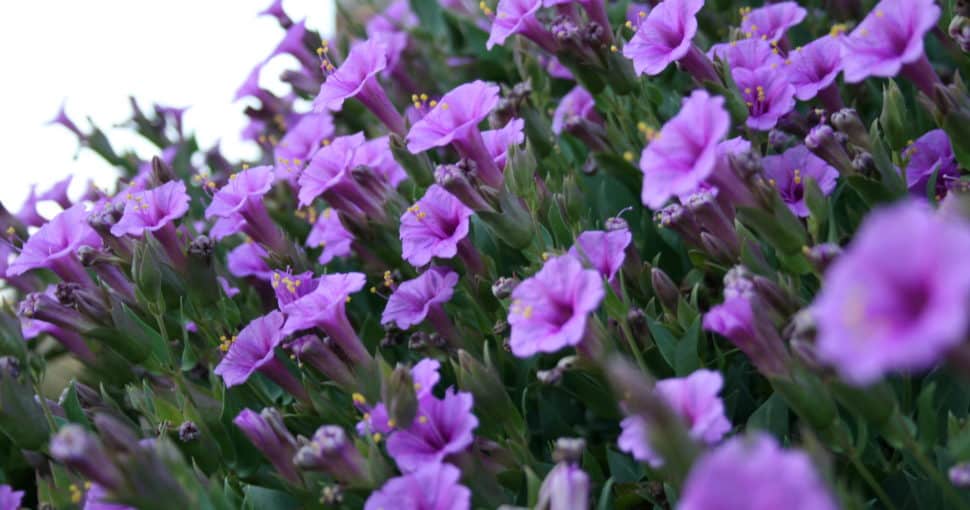Ohio is home to some of the most interesting and unique wildflowers as well as some of the most dangerous and poisonous ones. Since Ohio has many parks and some of the most beautiful trekking trails, it is essential to learn which plants may not be as harmless as they look. Some of them can have life-threatening tendencies due to the poison that they contain.
Contents
- 1. Poison Ivy (Toxicodendron Radicans)
- 2. Poison Sumac (Toxicodendron Vernix)
- 3. Horsenettle (Solanum Carolinense)
- 4. Wild Four-o’Clock (Mirabilis Nyctaginea)
- 5. Jimsonweed (Datura Stramonium)
- 6. Poison Hemlock (Conium Maculatum)
- 7. Wild Parsnip (Pastinaca Sativa)
- 8. Japanese Yew (Taxus Cuspidata)
- 9. Poison Oak (Toxicodendron diversilobum)
- 10. Hortensia (Hydrangea)
- 11. Flax (Linum usitatissimum)
- 12. Seneca Snakeroot (Polygala Senega)
- 13. Flowering Spurge (Euphorbia Corollata)
- 14. Snow-on-the-Mountain (Euphorbia Marginata)
- 15. Climbing Bittersweet (Celastrus Scandens)
- 16. Spotted Touch-Me-Not (Impatiens Capensis)
- 17. Sweet Violet (Viola Odorata)
- 18. White Azalea (Rhododendron Viscosum)
- 19. Great Mullein (Verbascum Thapsus)
- 20. Jerusalem Cherry (Solanum Pseudocapsicum)
- 21. Belladonna (Atropa Belladonna)
- 22. Wolf’s Bane/Monkshood (Aconitum)
Since Ohio has so many of such dangerous varieties, especially poison hemlock, which have recently become very difficult to control, most people choose to remain indoors out of fear.
Plants can have poison in their leaves, seeds, flowers or roots. Sometimes the entire plant may be poisonous and must not be consumed. Often some plants are so toxic that even touching them can be very dangerous as they may immediately cause a rash or release a toxin that can absorb in the skin and cause life-threatening reactions.
Burning of some plants in case of a wildfire can sometimes release very toxic fumes, which, when inhaled, can have severely damaging effects on the lungs. Here are some of the plants found commonly in the state of Ohio that contain poisonous potential.
1. Poison Ivy (Toxicodendron Radicans)
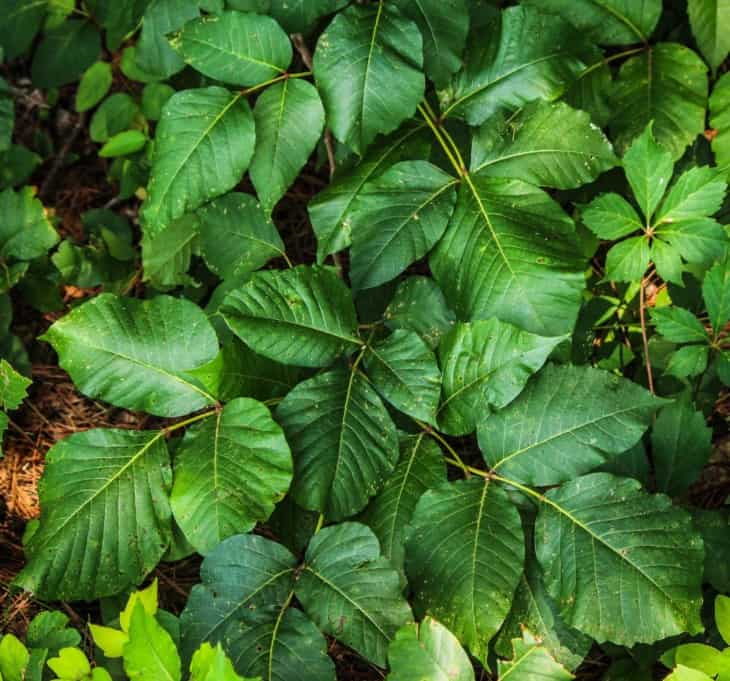
Poison ivy is an allergenic plant commonly found in Asia and East America. It has been known to cause contact dermatitis or a painful and itchy skin rash. This is caused by urushiol, a clear liquid found in its sap. The poison ivy is usually seen to grow with support as a climbing vine, along a trailing vine. Caution is advised to avoid accidental ingestion or contact of poison ivy with the eye as it can cause a severe reaction.
2. Poison Sumac (Toxicodendron Vernix)
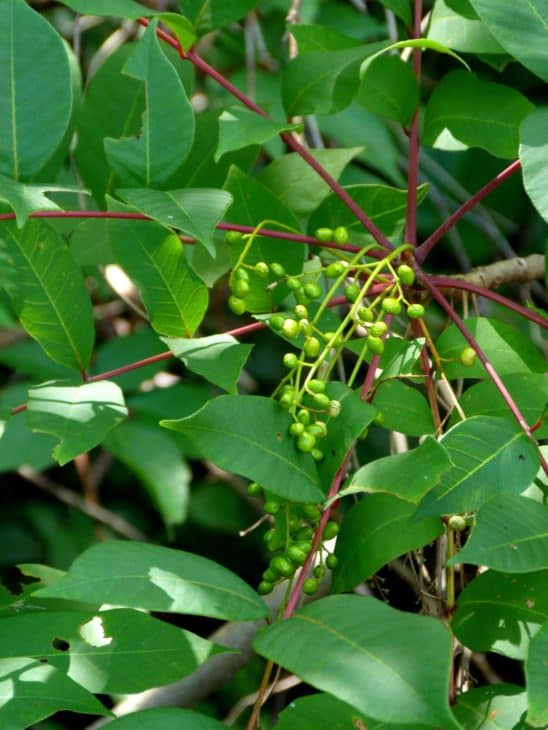
Poison sumac is considered even more allergenic than ivy and oak. Its oil is highly allergenic and can cause severe itching and burning reactions on the skin. Like poison ivy, sumac contains urushiol in its sap as well, but its chemical composition is more potent. When burnt, the plant releases smoke, which can be very toxic and harmful, causing pulmonary Edema and lung damage.
3. Horsenettle (Solanum Carolinense)
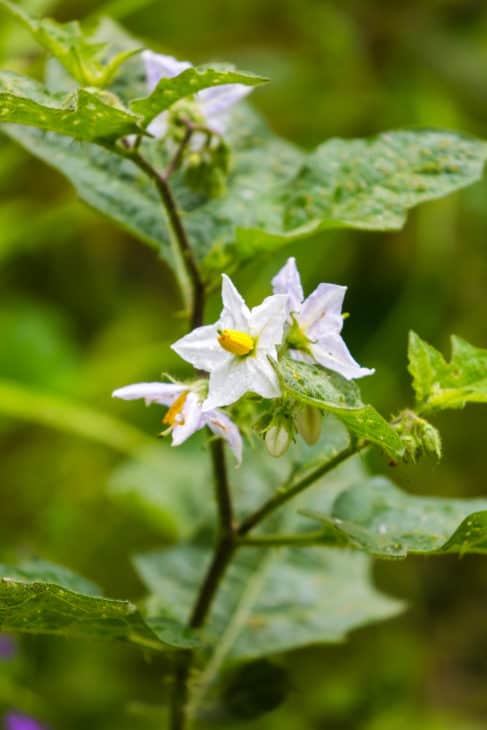
Horsenettle is a thorny plant belonging to the nightshade family of plants. It is very commonly found growing on the sides of roads and fields. Horsenettle is characterized by yellowish, sharp, spiked thorns found on the stems and leaves. It produces a yellow berry which is dangerous for children and can cause complications. The entire plant is poisonous, and upon ingestion, it can cause fever, dizziness, nausea, vomiting diarrhea, respiratory failure and even death.
4. Wild Four-o’Clock (Mirabilis Nyctaginea)
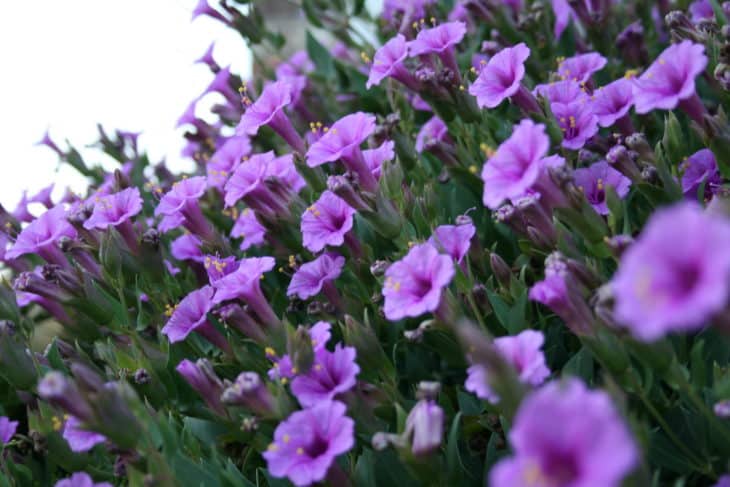
This species of plants is found in North America as well as in parts of Europe. There’s a myth that it attracts Japanese beetles and kills them, helping control beetle infestation. They have also been experimented with and used as trap crops where they are planted in areas away from vegetables and crops to protect them from insects. These plants are used to lure pets away and then sprayed upon in confined areas. Wild four o clock plants are not harmful to humans but may cause itchiness and some abdominal disturbances when ingested.
5. Jimsonweed (Datura Stramonium)
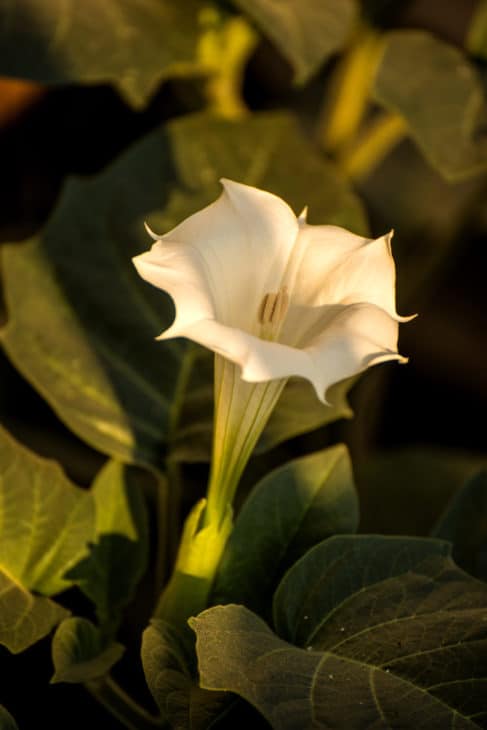
Jimsonweed plants also belong to the nightshade family and are an aggressive kind of weed that can destroy the beauty of any garden. Jimsonweed has medicinal uses such as treatment for cough and asthma and a painkiller. It is also now being used illegally as a recreational drug. The plant and its seeds contain high amounts of alkaloids as well as hyoscyamine, scopolamine and atropine. It should never be taken by mouth as it can have serious and immediate damaging effects.
6. Poison Hemlock (Conium Maculatum)
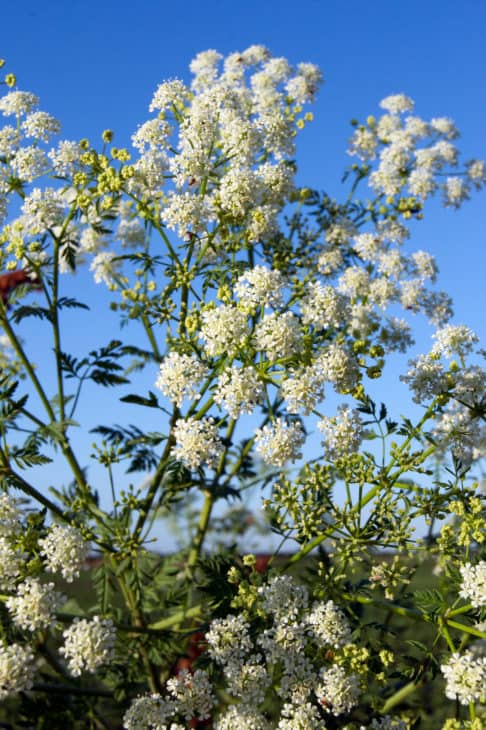
Poison hemlock has recently become a big problem in Ohio as it has a very aggressive rate of spreading. It can spread through rivers and streams as well as through animals and the wind. It is an extremely poisonous herbaceous plant and is very resilient. It can survive in a variety of climates and has a tendency of becoming an aggressive weed. Its leaves are toxic to animals and humans both. As many as 8 leaves are enough to cause death in a human, and therefore, these plants should be kept away from areas of grazing for livestock. The seeds and roots are very poisonous as well.
7. Wild Parsnip (Pastinaca Sativa)
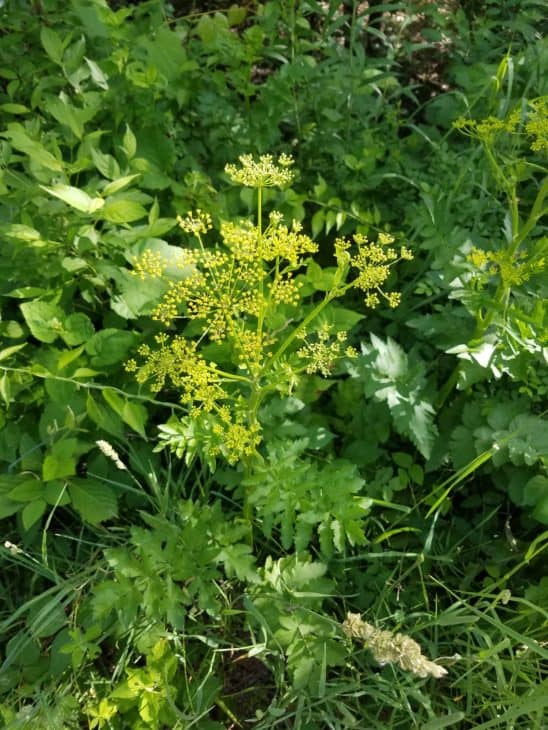
Wild parsnip is extremely dangerous and risky as it is poisonous to the touch. Care must be taken while walking outdoors in parks or trails or even on roadsides. It has the potential to cause sunburn and severe skin irritation upon contact, which can leave a permanent scar. It may also cause burning or scarring upon exposure to the sunlight after accidental ingestion of this plant.
Wild parsnip is identified by its yellow up tells shaped flowers and leaves that have sawtooth-like edges.
8. Japanese Yew (Taxus Cuspidata)
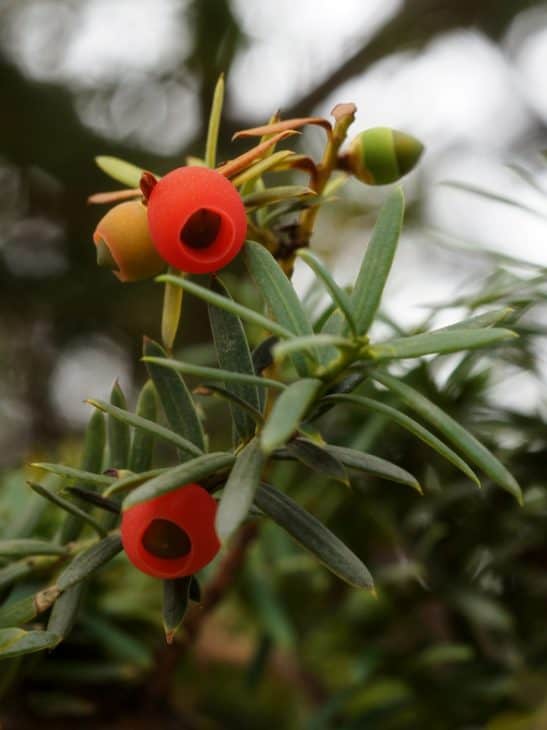
Japanese yew has bright yellow flowers and stunning red berries that make for festive holiday decorations, but the plant and its seeds are highly poisonous and must not be ingested. They are very dangerous for humans and all animals, and if ingested accidentally, the person must get immediate medical help as it contains a toxin called taxine A and B that causes heart failure.
9. Poison Oak (Toxicodendron diversilobum)
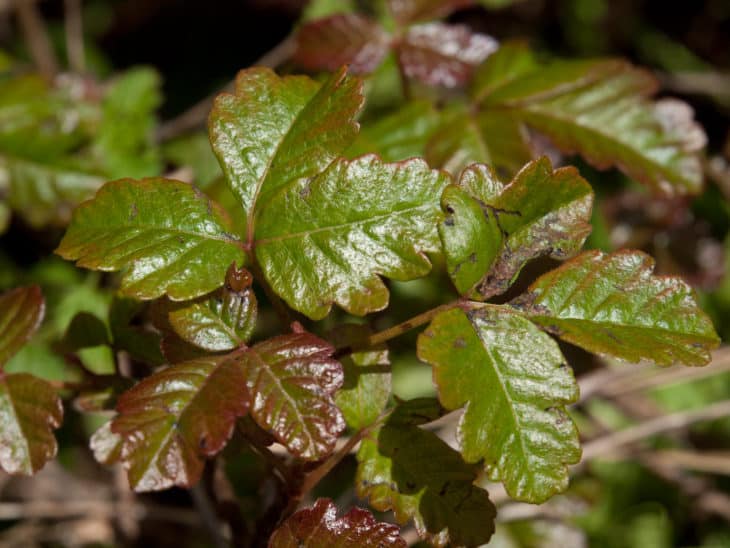
Poison oak grows as a low shrub with hairy leaves with 3 or 4 lobes. They may have yellow or white berries and their sap contains a clear oily fluid called urushiol. This is an allergen and a skin irritant causing dermatitis, itching and burning skin.
10. Hortensia (Hydrangea)
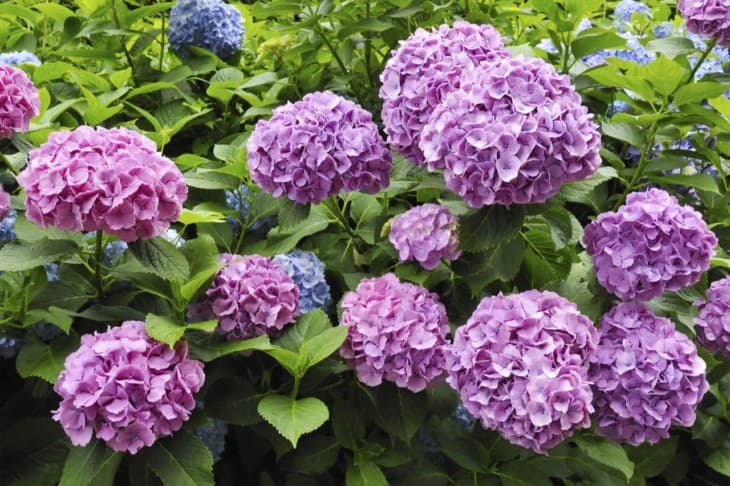
Hydrangeas, also known as Hortensia, are one of the widest specie of flowering plants seen in many parts of the world. Their colors vary according to the level of acidity in the soil. They may have white, pink, red, blue, light purple and dark purple flowers. They are toxic to humans, cats and dogs and care must be taken when hydrangeas are planted in the garden.
11. Flax (Linum usitatissimum)
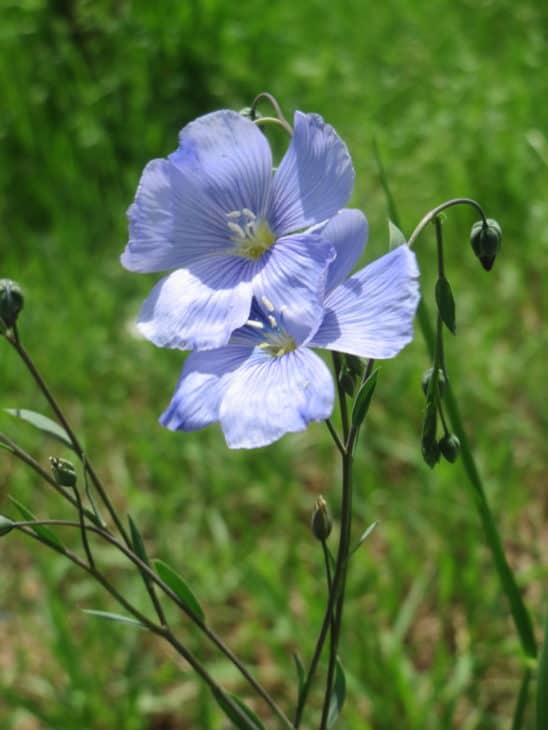
Flax, also commonly known as flax or linseed, is a flowering plant. It has blue flowers and produces glossy brown seeds used as a source of fiber and is cultivated as an agriculture crop. Flaxseed contains essential omega 3 fatty acids and helps with many ailments. But it contains small amounts of the toxin cyanide and it can be toxic for animals such as cats and dogs.
12. Seneca Snakeroot (Polygala Senega)
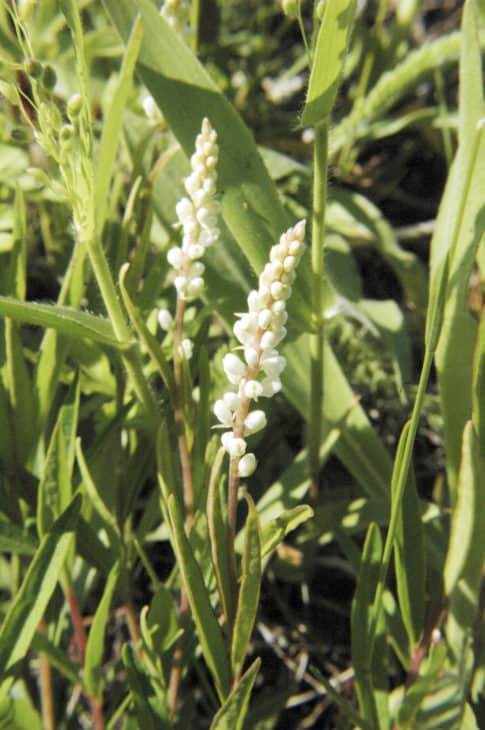
Seneca snakeroot is native to North and East America, where it is widely distributed. It is cultivated largely for its root as it has many medicinal purposes. The plant is not harmful in small amounts, but in large amounts, it can cause poisoning resulting in nausea, vomiting and abdominal symptoms.
13. Flowering Spurge (Euphorbia Corollata)
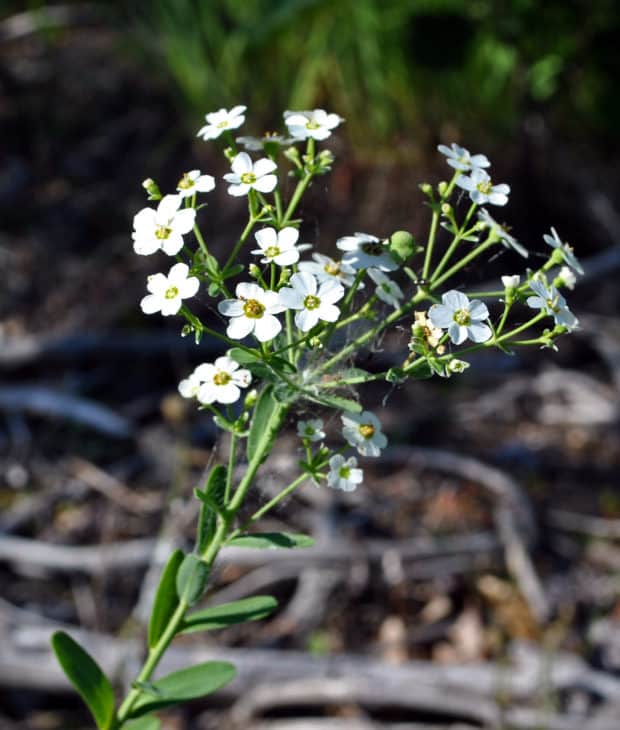
Flowering spurge has been used for years in ancient medicine for its medicinal properties. It’s another one of those plants which are dangerous to the touch and should not come into contact with skin. Upon contact with skin, it can cause dermatitis, itching, burning and even scarring. Its sap contains a milky white latex that is toxic if eaten. It is a strong laxative and care must be taken with animals as it has toxic effects in large doses.
14. Snow-on-the-Mountain (Euphorbia Marginata)
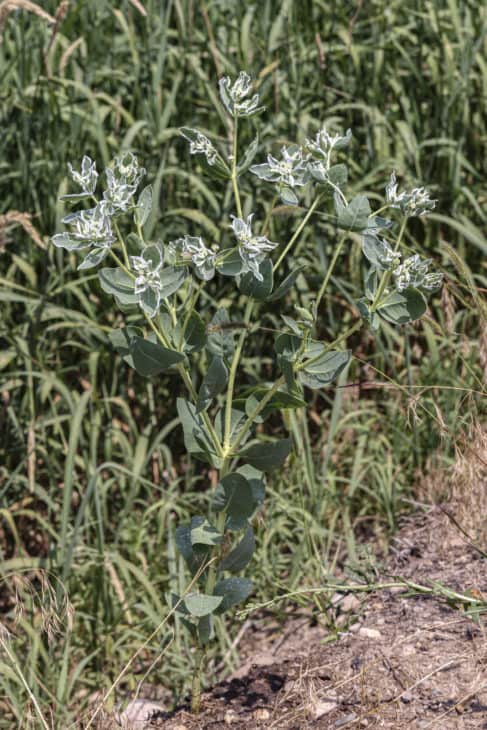
Snow-on-the-mountain plants have tiny white flowers that grow in clusters and therefore, they look like the image of snow on the mountain. They also produce a cluster of berries that change its color from green to yellow as the seasons change. Extracts of this plant have been toxic and irritating to humans and animals as it causes blisters in the mouth, throat and gut lining. If contact with skin and eyes, it can cause irritation and must immediately be flushed out.
15. Climbing Bittersweet (Celastrus Scandens)
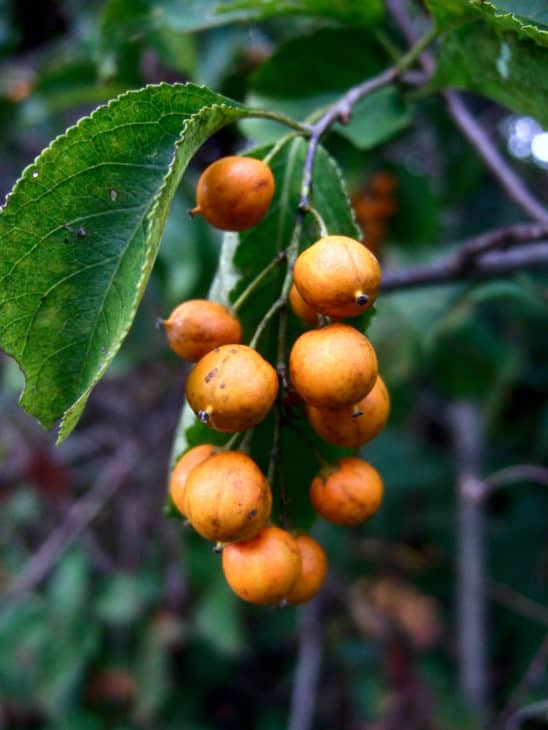
Climbing bittersweet contains solanine, which is the toxic agent within this plant. Ingestion can result in a variety of harmful symptoms and needs to be treated immediately. Symptoms of poisoning with this plant Include nausea, vomiting, diarrhea, bradycardia, strained breathing, confusion, hallucinations and dilated pupils. Immediate medical help should be sought in case of suspected poisoning.
16. Spotted Touch-Me-Not (Impatiens Capensis)
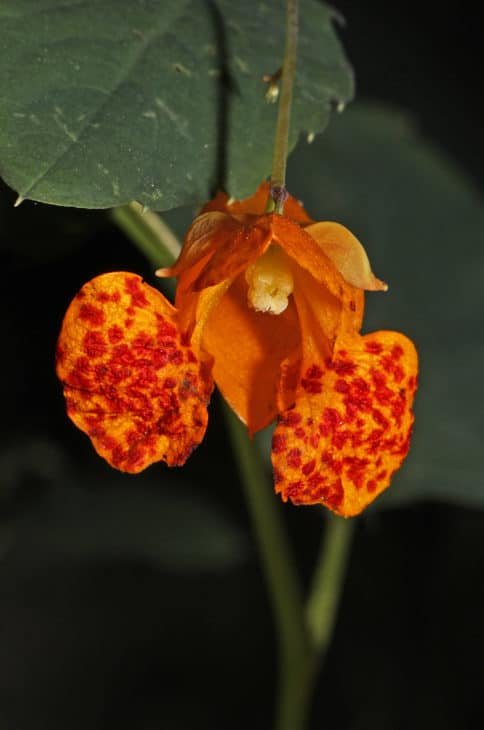
Touch-me-not plants are the plants of choice for gardeners as they look beautiful and are unique as well as safe and non-toxic. They are small plants and are named such because they explode harmlessly when touched and send seeds up in the air. This is their method of pollinating. They have orange flowers that are spotted and are mostly found in North America. Although they are regarded as safe, they may still not be safe to be consumed by pets such as cats.
Alternatives: 8 Plants That Look Like Impatiens
17. Sweet Violet (Viola Odorata)
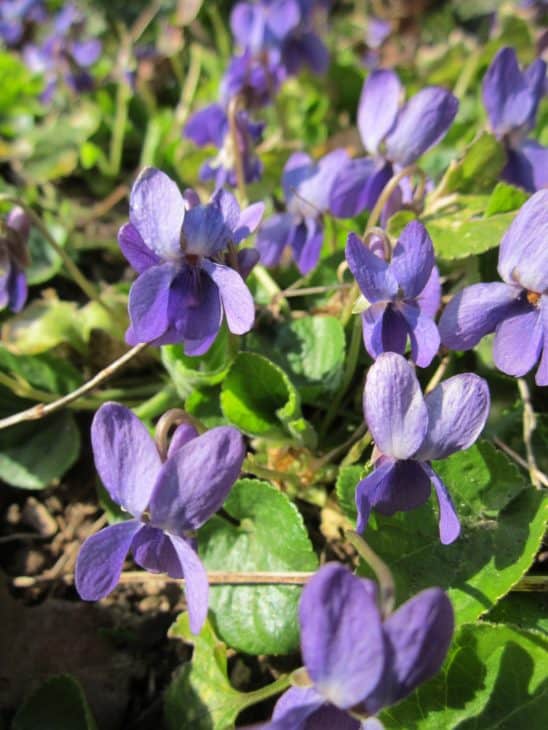
These are beautiful flowers in deep violet color and are loved by many gardeners. But care must be taken as the entire plant, including its leaves, roots and seeds, is poisonous and should not be ingested. It has many medicinal purposes, for example, to treat symptoms of the common cold such as runny nose, fatigue and even to treat stress and insomnia. But only prepared by a pharmacist. It should not be taken on your own.
18. White Azalea (Rhododendron Viscosum)
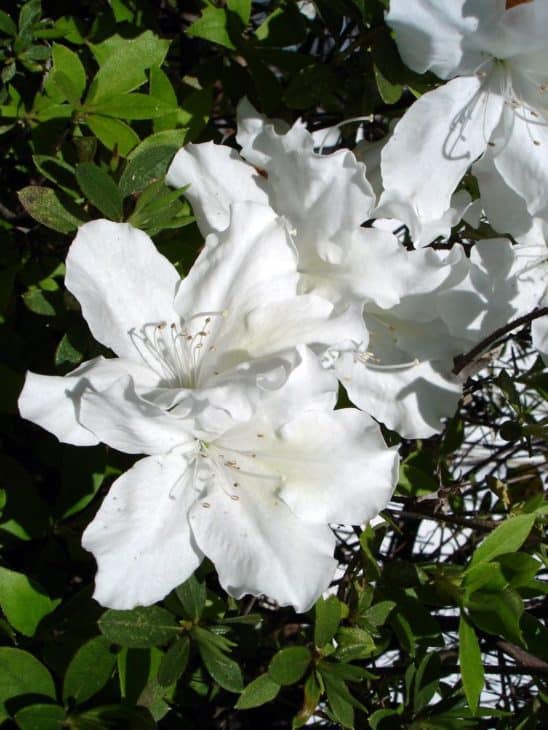
White Azalea plants are widely found all over America in many beautiful colors such as red, pink, orange, purple and yellow. They grow in bushes and all parts of the plants are considered toxic as they contain a toxin called grayanotoxin. Although they cause mild tingling and burning sensation in humans, they can be lethal for cats and dogs.
19. Great Mullein (Verbascum Thapsus)
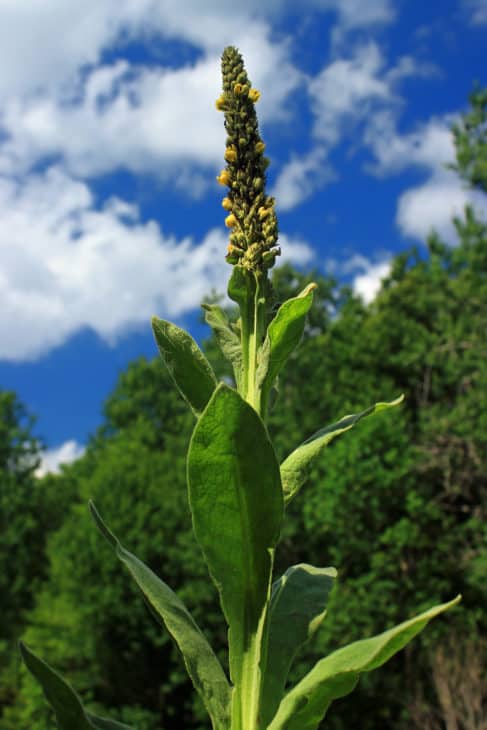
This species is originally from Europe but is found widely in parts of America as well. Mullein is mostly used for its tea brewed from its leaves, but it contains toxic elements. Its seeds should not be consumed as not much is known about its toxic effects. Some varieties of this plant may cause contact dermatitis. In people with sensitive skin, it may cause itching, burning or a rash.
20. Jerusalem Cherry (Solanum Pseudocapsicum)
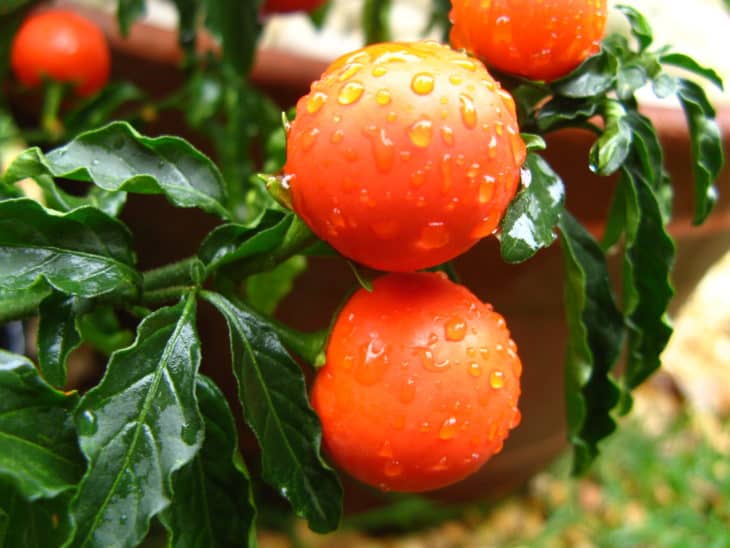
Jerusalem cherry comes from the family of the nightshade and is also known as winter cherry. Due to their easy maintenance and aesthetics, they are usually used as indoor plants. It is also used as a decorative plant due to its small round red and orange berries. The berries are poisonous and must not be consumed. Immediate medical help should be sought in case accidental ingestion occurs.
21. Belladonna (Atropa Belladonna)
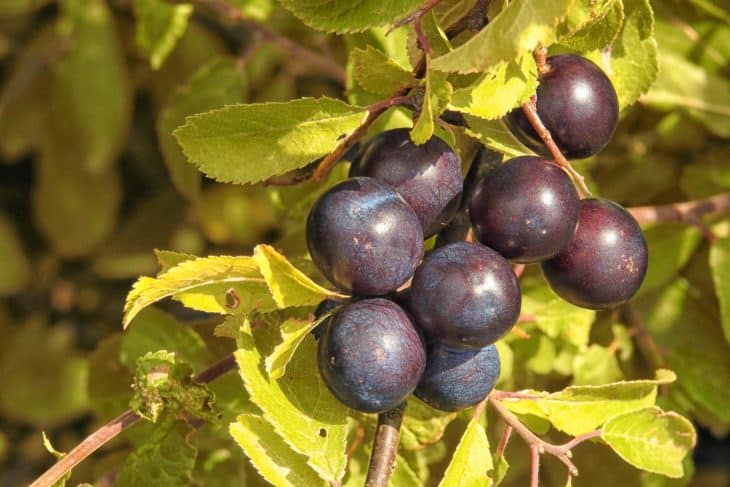
It is an herbaceous plant also belonging to the nightshade family, which also includes tomatoes, eggplants and potatoes. It has many medicinal uses but only in controlled amounts. Due to its severe toxic effects, it should never be consumed by mouth. Symptoms of toxicity include dilated pupils, increased heart rate and breathing, urinary retention, confusion, constipation and convulsion. Immediate medical help should be sought in case of ingestion.
22. Wolf’s Bane/Monkshood (Aconitum)
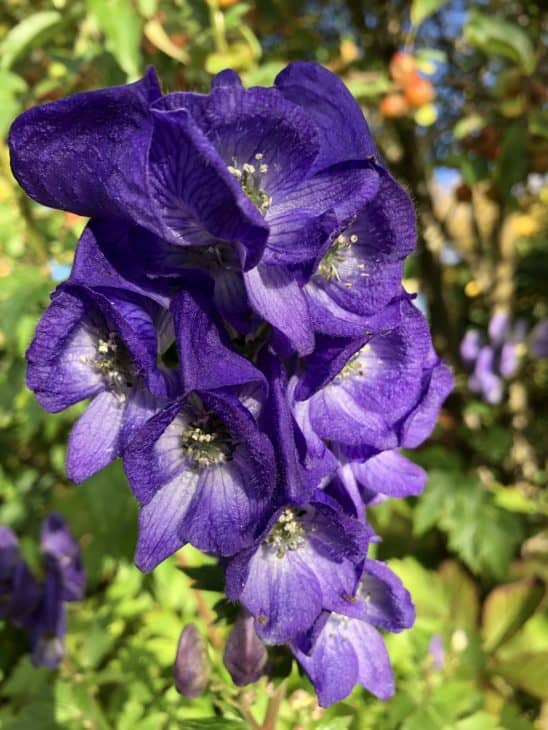
A plant with characteristically blue and purple flowers, the wolf’s bane is very toxic. It contains a powerful toxin called aconitine, especially in its roots. This is a highly poisonous plant and can result in death within 2 to 6 hours of accidental ingestion. All parts of the plant contain toxins and must not even be touched. Even handling the plant or touching the flower can have severe consequences as the toxin can be absorbed through the skin and cause cardiac and respiratory problems.

